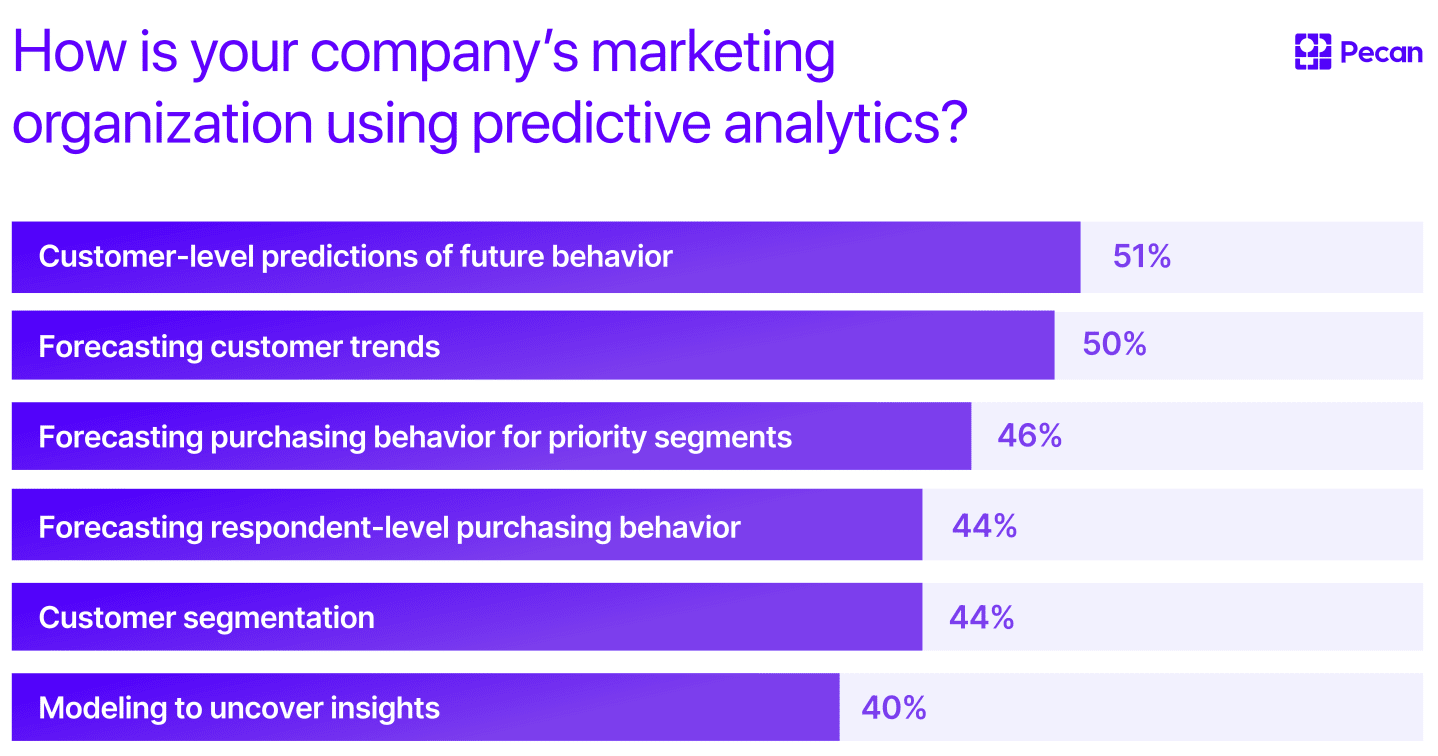Marketing teams must anticipate customers’ interests and behavior to achieve their goals. Artificial intelligence technologies increasingly make that possible. Yet many marketers are still in the early days of formulating their AI strategies. They’re demanding more value and results from their experimentation with AI.
For our 2022 State of Predictive Analytics in Marketing report, we surveyed 250 U.S. marketing executives, in partnership with Wakefield Research. These executives work at companies with a minimum annual revenue of $100M. Their responses reveal a strong interest in the potential of AI-based predictive analytics.

However, marketing teams face various challenges in fully adopting this technology. With no universal playbook for integrating data science into marketing, multiple strategies have evolved to implement predictive analytics. Those approaches have seen varying success levels.
The survey results reflect this complex situation. But they also provide inspiration for marketing teams and leaders tackling challenges and developing marketing strategies with AI. That’s true regardless of where they might be on the advanced analytics adoption curve.
Learn more in the full report about these key findings:
- Which AI capabilities and predictive insights marketing leaders want today — and the difficulties they face in achieving them
- Where marketing and data science professionals fail to align, and the consequences for their shared efforts around predictive models and analytics
- Why many marketers still feel like predicting customer behavior and marketing campaigns is “guesswork,” making agility and rapid adaptation challenging
- How predictive analytics contributes vital information that helps marketers demonstrate the value of their teams’ work
